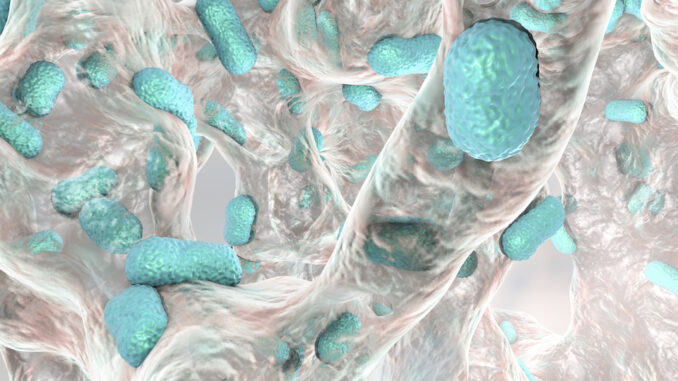
The pathogen Acinetobacter baumannii can survive on hospital surfaces — without water — for months, an ability that has helped it become a leading cause of hospital-acquired infections.
Now, a team of Vanderbilt researchers has discovered a mechanism this bug uses to live in a dried-out state: it produces “hydrophilin” proteins that protect against water deprivation.
The discovery, reported in the journal Cell Host & Microbe, could guide new strategies to eliminate A. baumannii from surfaces by targeting these hydrophilin proteins.
The World Health Organization considers A. baumannii one of the highest priority bacteria for which new antibiotics are needed because of its growing antibiotic resistance, said Eric Skaar, PhD, MPH, Ernest W. Goodpasture Professor of Pathology, Microbiology and Immunology.
“The fact that A. baumannii contaminates hospital surfaces and is extremely difficult to get rid of puts it into close contact with very vulnerable patients,” said Skaar, who is also director of the Vanderbilt Institute for Infection, Immunology, and Inflammation. Disruptions to infection control practices during the COVID-19 pandemic have resulted in recent surges in A. baumannii cases.
The findings might also have translational applications for preserving protein- and live bacteria-based pharmaceuticals that are dried and packaged into pill form, with only a fraction surviving.
“A challenge for probiotics is getting enough bacteria through the stomach and into the gut,” Skaar said. “If you put these proteins from Acinetobacter into a probiotic, that organism would be much more likely to survive the desiccation (drying) process and come out of the pill alive.”
To explore how A. baumannii tolerates water loss, postdoctoral fellow Erin Green, PhD, led studies that first examined the effects of desiccation on A. baumannii physiology and pathogenesis. The researchers found that A. baumannii could survive more than seven months of desiccation and that when it was dried and then rehydrated, it caused more virulent infections in mice. They also demonstrated that recently isolated clinical strains of A. baumannii were 10-times more resistant to desiccation compared to an older laboratory strain.
Using a genetic screen, Green and colleagues discovered two A. baumannii “desiccation tolerance proteins,” which the group named DtpA and DtpB. The proteins have an unusual amino acid sequence of repeating units and don’t look like typical proteins, Skaar said.
“The protein sequence really surprised us, and we figured out pretty quickly that DtpA and DtpB share these unusual features with a group of proteins called ‘intrinsically disordered proteins’ that are present in organisms known to be extraordinarily resistant to water starvation.”
The list of organisms includes tardigrades, nematodes, yeast and plant seeds. DtpA and DtpB are some of the first bacterial intrinsically disordered proteins to be characterized.
“It was pretty cool to figure out that Acinetobacter is using the same strategy to resist water deprivation as tardigrades, which are among the most resilient animals known and have even survived exposure to outer space,” Skaar said.
The researchers demonstrated that expressing DtpA in a different, probiotic strain of bacteria could extend protection against water loss to that strain, lending support to the idea of using DtpA or similar proteins to aid probiotic survival after desiccation. They also showed that drying or heat-inactivating a purified protein enzyme in the presence of DtpA protected the enzyme’s activity.
“We think these proteins may have a valuable commercial application for preserving activity of protein and probiotic therapeutics,” Skaar said.
Authors in addition to Green and Skaar include Andrew Monteith, PhD, and Hualiang Pi, PhD, at VUMC and Joseph Fakhoury and David Giedroc, PhD, at Indiana University. The research was supported by the National Institutes of Health (grants AI101171, HL094296, AI161860, HL144081, GM118157).

